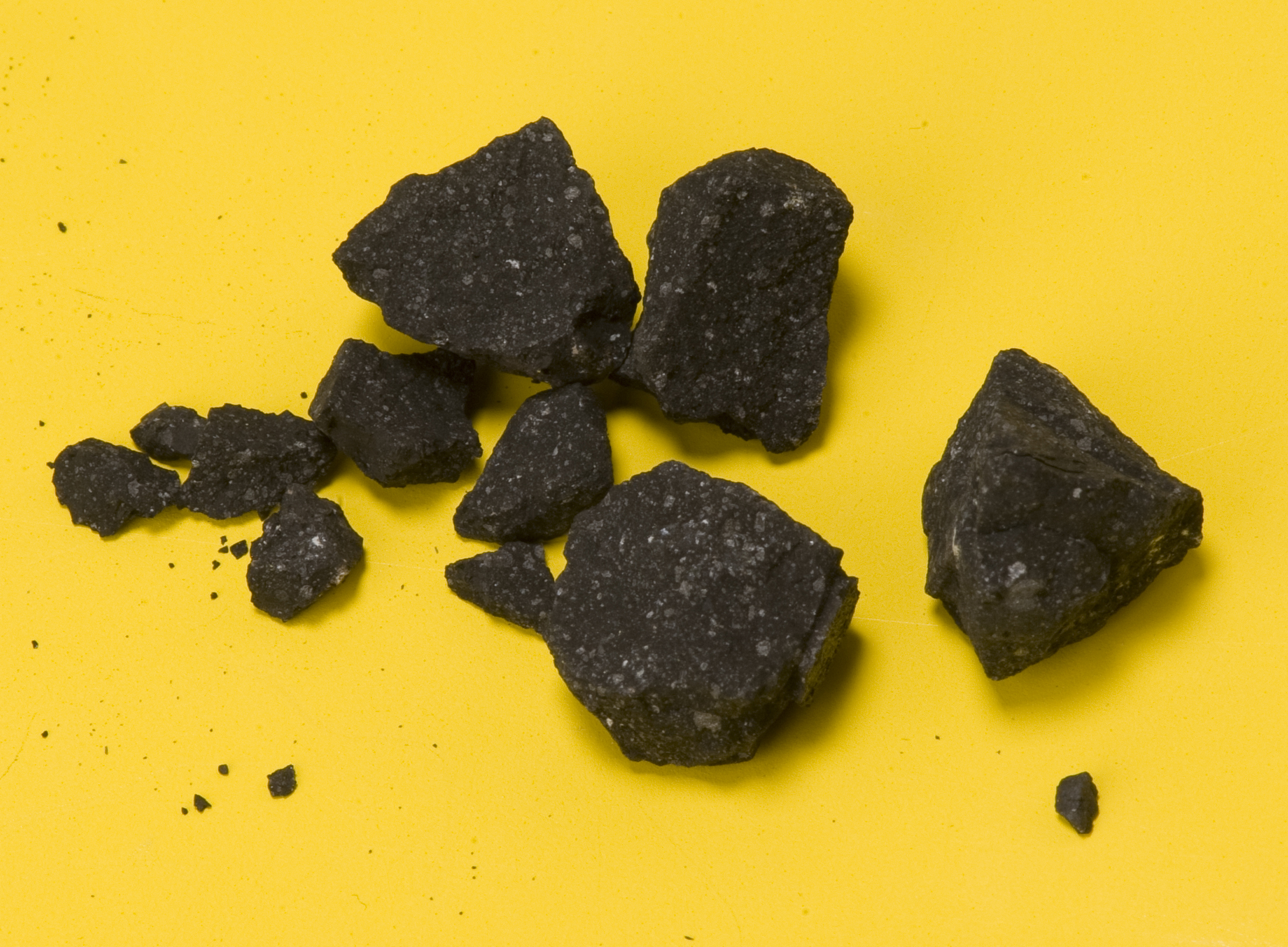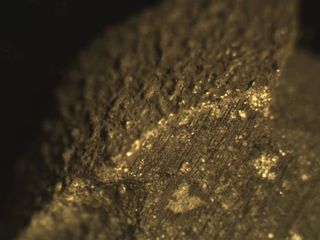Meteorite From California Fireball Reveals Its Secrets

Barely eight months after a fireball lit up California and Nevada skies, the first scientific paper is out examining the meteorites it left behind.
"It was done very quickly," said Peter Jenniskens, a meteor researcher who suddenly found himself managing a small army of volunteers when the Sutter's Mill meteor broke up April 22.
Dozens of scientists jumped to Jenniskens' aid as he searched for meteorite fragments. But less publicized will be the volunteerswho phoned in reports of meteorites, or sent in pictures and video of the fireball by e-mail.
Jenniskens' team commandeered an airship to search for fragments. Meanwhile, the team caught a lucky break — Doppler radar information from nearby weather stations showed the track of the meteorite. Adding this data to the pictures and video sent in by volunteers, the scientists could reconstruct the impacting asteroid's early history. [Photos: Fireball Drops Meteorites On California]

According to Jenniskens, the paper, to be published Friday (Dec. 21) in the journal Science, was made possible by the mass crowdsourcing effort that enabled a large amount of data to be collected in a short time.
"It's all very important, and it's fantastic how this came together," said Jenniskens, a meteor astronomer at the Search for Extraterrestrial Intelligence (SETI). "For me, it was personally very exciting."
Peeling back the years
Get the Space.com Newsletter
Breaking space news, the latest updates on rocket launches, skywatching events and more!
The Sutter's Mill meteorite turned out to be a rare type — a carbonaceous chondrite that contains information about the early stages of the solar system. The meteorite pieces originated in a space rock that was perhaps as much as 3.3 yards (3 meters) across.
A space rock is called an asteroid or meteoroid until it hits the Earth's atmosphere. The resulting fireball is then called a meteor until it hits the ground, at which point it is dubbed a meteorite.
The asteroid that would later impact California orbited the sun in the asteroid belt between Mars and Jupiter, making about three trips around our star in the time it takes Jupiter to orbit once. Such a ratio, known as a resonance, is common in the solar system — some of Jupiter's moons are in resonance with each other, for example.
The asteroid's resonance was a little "off" from a perfect 3 to 1 ratio. At some point, Jupiter's strong gravity muscled the asteroid out of its normal orbit and sent it on a trip to the inner solar system. This pushed the asteroid into a new orbit that brought it in as far as Mercury's orbit when it got closest to the sun.
This is where history begins to blur. The weathering of the meteorite fragments suggested the space rock was only 50,000 to 90,000 years old when it hit Earth — basically a blink of an eye in the solar system's nearly-5-billion-year history. This is fortunate, as Jenniskens' team discovered carbonaceous chondrites are fragile and begin to break up around that time frame.
The team suspects the meteor that hit Earth may be a fragment from a larger asteroid.
Blast through the atmosphere
In all, 77 fragments were found from the Sutter's Mill meteorite. These totalled less than 2 pounds (0.9 kilograms) of material. But the meteor weighed about 88,200 pounds (40,000 kilograms) when it hit the atmosphere.
"Quite a lot of material was lost," Jenniskens said.
The meteor's speed clocked in at 17.8 miles (28.6 kilometers) a second, which is faster than any previously recorded meteorite fall. After hitting a peak brightness about 35 miles (56 kilometers) above the ground, the meteor broke apart at an altitude of roughly 30 miles (48 kilometers.)
The atmosphere did a number to the outside of the meteorite bits, which were heavily damaged by the time they got into Jenniskens' lab. However, the interior was better preserved.
Only a handful of the fragments have been analyzed so far, but early results show that carbonaceous chondrites are highly complex.
The meteorite is a breccia, meaning that it's a coalition of different kinds of material. By examining the meteorite with X-rays, the researchers were able to separate out several different components.
The scientists also saw changes in the composition of fragments recovered before and after a large rainstorm that took place two days after the fireball was seen. The mineral oldhamite, for example, dissolved in the fragments exposed to moisture.
"This thing is diverse, even on a small scale," Jenniskens said.
But just how diverse will be a matter for future research. There's still a drawer full of meteorites that have barely been touched since they were first delivered to the lab. As such, Jenniskens anticipates this one meteorite event will deliver years of research to his team.
Follow Elizabeth Howell @howellspace, or SPACE.com @Spacedotcom. We're also on Facebook and Google+.
Join our Space Forums to keep talking space on the latest missions, night sky and more! And if you have a news tip, correction or comment, let us know at: community@space.com.

Elizabeth Howell (she/her), Ph.D., was a staff writer in the spaceflight channel between 2022 and 2024 specializing in Canadian space news. She was contributing writer for Space.com for 10 years from 2012 to 2024. Elizabeth's reporting includes multiple exclusives with the White House, leading world coverage about a lost-and-found space tomato on the International Space Station, witnessing five human spaceflight launches on two continents, flying parabolic, working inside a spacesuit, and participating in a simulated Mars mission. Her latest book, "Why Am I Taller?" (ECW Press, 2022) is co-written with astronaut Dave Williams.








